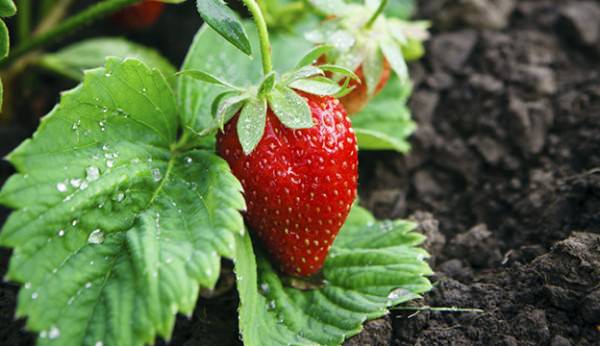
Once established in your garden, strawberries, raspberries, blackberries and blueberries will reward you year after year with fresh, delicious fruit bursting with flavor you just can’t buy in a store. The secrets to the healthiest plants and most prolific harvests all lie within proper preparation of the growing area. Prior to planting your first berry plant, consider the following five actions to ensure the tastiest and most exceptional berries possible.
1. Determine Planting History
Before you invest a great deal of time and effort into preparing a particular spot for your berries, consult your records on what has grown there in previous years. Avoid planting berries in areas where tomatoes, peppers, potatoes, and eggplants have grown in the past four to five years, as plants in the nightshade family can carry a soil-borne disease called Verticillium wilt, which could attack your vulnerable new plantings. Because wild brambles can also carry this disease, clear any that you spot in the surrounding area. If you have goats, this is the perfect job to task them with!
2. Improve Drainage
One of the most critical factors for growing any type of plant successfully is good soil drainage. If roots are unable to get the proper balance of air, water and nutrients they need from the ground, a plant’s growth will suffer.
To determine how well your soil drains, dig a hole about 2 feet deep and 1 foot across. If the dirt is not completely dry, cover it with cardboard or plastic for a few days until it is. Once dry, fill the hole with water and observe what happens. If it takes less than five minutes for the water to drain out, the soil is too loose, or sandy. If it takes over 10 minutes, it’s heavy clay. Both types of soil can be improved by covering the growing area with several inches of compost or other organic matter, and then digging it in to a depth of 9 to 12 inches.
Drainage can also be improved by forming ridges, or mounded rows, about 8 to 10 inches tall and wide enough to grow a single row of plants.
3. Adjust pH
Most berries, especially blueberries, require acidic soil to thrive. Find out your soil’s pH via a soil test before planting so you’ll know how much amending your dirt will need. If berries are grown outside of their ideal pH range, they’ll show signs of nutrient deficiency, such as discolored, misshaped leaves or decreased yield, and eventually perish. You can find easy-to-use soil test kits at your local garden center or through your county’s extension agent.
Once you have your soil results, compare them to the following suggested ranges: strawberries, raspberries and blackberries do well with a pH of 5.8 to 6.4, while blueberries require a much more acidic home, around 4.5 to 5.
To lower the pH and help make your soil more acidic, work in generous amounts of peat moss, leaf mold (composted leaves) or elemental sulfur. Mulch heavily around each plant with pine needles or pine bark chips. Although it’s less likely to be a problem for berry patches, if you need to raise pH, wood ashes, garden lime and bone meal are three natural substances to consider.
4. Plant Cover Crops
A succession of cover crops, such as oats, rye and buckwheat, can be used to add organic matter and improve soil structure in a future garden bed intended for berries. Plow, till or otherwise turn the cover crops under before they go to seed.
Once berries are well-established, a permanent cover crop can be planted between rows to help suppress weeds and give gardeners a mud-free path to walk on, helpful for plant maintenance and harvesting. Perennial grasses, such as rye or fescue, are two good choices and will require little upkeep other than occasional mowing.
5. Build Raised Beds
If your soil is extremely poor, you’ll get better results in a shorter time frame by creating raised beds for your berry crops. Strawberries, raspberries, blackberries and blueberries all prefer well-drained, sandy loam that is rich in organic matter. Create a mixture to fill your beds by combining your own native soil with plenty of compost, leaf mold and peat moss.
Blueberries deserve a special mention as far as soil mix because of their affinity to acidic soil. One option is to combine your native soil with up to 70- or 80-percent damp peat moss. Those with especially heavy clay soils have been known to yield good results using a soilless mix of half peat moss and half shredded pine bark mulch. To easily moisten a bag of peat moss, make a hole in the top of the bag large enough for a garden hose end to fit into. Fill the bag with as much water as it can hold, then remove the hose. Leave it, undisturbed, until the next day and your peat should be evenly damp and easy to work with.
While berry plants might need a bit of extra care to get established, they make a wonderful addition to any home garden. They’ll provide season after season of delectable fruit, sure to be enjoyed by the entire family.
Get more berries growing tips and recipes:
- 17 Sweet Ways to Savor the Berry Harvest
- Berry Delicious Garden Milkshakes
- Make Money with Strawberries
- Lavender Blueberry Muffins
- How to Prune Raspberry Canes




